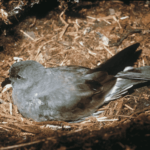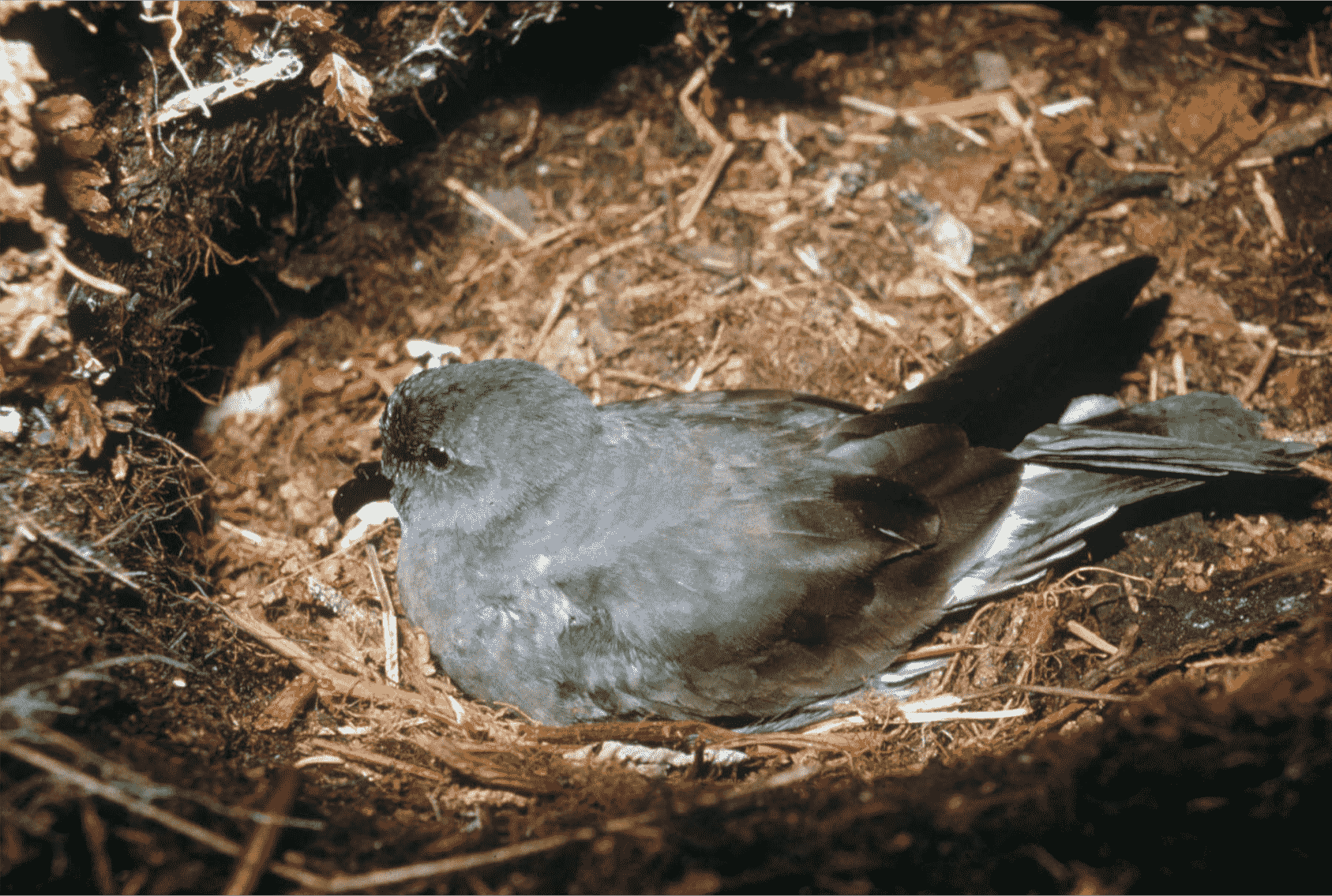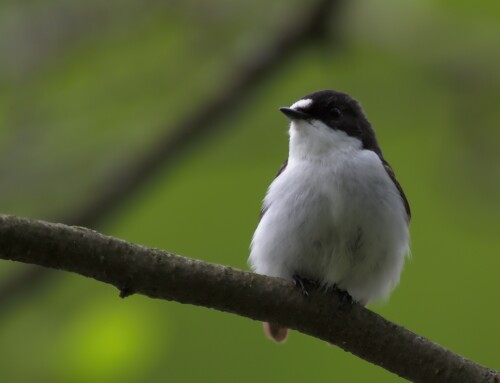LINKED PAPER
Evidence of incubation trade-offs in Leach’s Storm-Petrel (Oceanodroma leucorhoa): Ptilochronology as a measure of reproductive investment in a long-lived seabird. Elliott, L.H., Grady, J., Cerchiara, J., Haussmann, M.F. & Mauck, R.A. 2020 IBIS. DOI: 10.1111/ibi.12912 VIEW
 Parents everywhere will recognise the dilemma: invest your energy into “me-time” to sustain yourself while your partner handles the childcare, or invest that energy into parenting the kids yourself so that your partner has the chance for some time off. Or maybe it isn’t so your co-parent can take time off, but rather so that they have time to join that important Zoom call or get in some hours on their work-from-home job? Raising offspring is a lot of work, and the energy needs of the parent may often be in conflict with the care requirements of the offspring. For Leach’s Storm-Petrels, this parent-offspring conflict raises its head as the adults split their time between foraging on krill out at sea and returning to their island breeding colonies, where they dig burrows and raise a single offspring each year. Their efforts depend not just on their own ability to juggle the needs of their offspring against hunger, but also on their ability to coordinate their parental effort with their mate.
Parents everywhere will recognise the dilemma: invest your energy into “me-time” to sustain yourself while your partner handles the childcare, or invest that energy into parenting the kids yourself so that your partner has the chance for some time off. Or maybe it isn’t so your co-parent can take time off, but rather so that they have time to join that important Zoom call or get in some hours on their work-from-home job? Raising offspring is a lot of work, and the energy needs of the parent may often be in conflict with the care requirements of the offspring. For Leach’s Storm-Petrels, this parent-offspring conflict raises its head as the adults split their time between foraging on krill out at sea and returning to their island breeding colonies, where they dig burrows and raise a single offspring each year. Their efforts depend not just on their own ability to juggle the needs of their offspring against hunger, but also on their ability to coordinate their parental effort with their mate.
Incubation is a particularly challenging period for these birds, as each parent spends several days at a time incubating the egg, while its mate is out building up the vital energy reserves needed to sustain a bird the size of a robin without eating for days at a time. Pairs that coordinate their arrivals and departures are able to avoid leaving their egg unattended. Leaving an egg unattended means that the embryo drops below the temperature threshold for development. Based on the many possible negative consequences of this for storm-petrels and other procellariiformes, it is commonly referred to as egg neglect. But are birds that invest more heavily in parental care making a trade-off, or can some birds sustain both their own needs and the needs of their offspring and make it look like child’s play?
 Figure 1 Leach’s Storm-Petrels lay a single egg each year, and parents fast while taking turns incubating the egg inside of their burrow for several days at a time. © R.A. Mauck
Figure 1 Leach’s Storm-Petrels lay a single egg each year, and parents fast while taking turns incubating the egg inside of their burrow for several days at a time. © R.A. Mauck
We expected parents that invested more in their own self-maintenance would take longer to hatch their eggs, leave their eggs neglected more often, and have lower hatching success. We used ptilochronology—the study of feather growth rates—to assess the investment these birds made into self-maintenance. By pulling a single tail feather during the incubation period and measuring the rate of regrowth later in the incubation period, we were able to establish an index of the energy input and output of each bird. We tracked incubation period length by checking nests for egg lay date and hatch date. To monitor egg neglect, we used temperature loggers to compare the internal nest temperature with the ambient temperature near the mouth of the burrow. The presence of an adult raised the internal temperature several degrees above the ambient temperature.
We found that eggs took longer to hatch when both parents grew their feathers back more quickly.
 Figure 2 Mated pairs of Leach’s Storm-Petrels that grew their feathers back more quickly experienced longer incubation periods at Kent Island, Canada in 2006 and 2008. Values are normalised within each year to account for differences between years, using annual means and standard deviations to centre and scale each year’s data at zero.
Figure 2 Mated pairs of Leach’s Storm-Petrels that grew their feathers back more quickly experienced longer incubation periods at Kent Island, Canada in 2006 and 2008. Values are normalised within each year to account for differences between years, using annual means and standard deviations to centre and scale each year’s data at zero.
This suggests that the parents are facing a trade-off: faster feather growth equals more investment in self-maintenance, equals a longer incubation period. Longer incubation periods may come at a cost to the offspring (e.g. Boersma and Wheelwright 1979), but Leach’s Storm-Petrels are long-lived birds and if this year’s breeding effort is unsuccessful they have many future chances to try again—so long as they invest enough in their own self-maintenance to survive another year.
Eggs also took longer to hatch when rates of egg neglect were higher.
 Figure 3 Mated pairs of Leach’s Storm-Petrels that exhibited higher rates of egg neglect took longer to hatch an egg at Kent Island, Canada in 2006, 2008 and 2013. Values are normalised within each year to account for differences between years, using annual means and standard deviations to centre and scale each year’s data at zero.
Figure 3 Mated pairs of Leach’s Storm-Petrels that exhibited higher rates of egg neglect took longer to hatch an egg at Kent Island, Canada in 2006, 2008 and 2013. Values are normalised within each year to account for differences between years, using annual means and standard deviations to centre and scale each year’s data at zero.
More neglect, whether through greater time spent on self-maintenance or lack of pair coordination, meant a longer time to hatch the egg. Curiously, feather growth rates did not explain egg neglect rates or hatching success. The lack of correlation between feather growth rate and egg neglect suggests that some pairs may be better able to manage competing demands of self-maintenance and incubation, possibly due to individual quality, burrow quality, or coordination of incubation effort. So if you are looking for strategies to manage your own version of parent-offspring conflict, consider this permission to coordinate some off-duty time with a co-parent or other care-giver. It seems to work for the storm-petrels.
References
Boersma, P.D. & Wheelwright, N. 1979. Egg neglect in the Procellariiformes: Reproductive adaptations in the Fork-Tailed Storm-Petrel. Condor 81: 157–165. VIEW
Image credit
Top right: Leach’s Storm-Petrel Oceanodroma leucorhoa © C.E. Huntington




